estudiobambam’s renovation breathes new life into 100-year-old family home in spain
a restored traditional family home by estudioBamBam
Alicante-based estudioBamBam has renovated an almost 100-year-old family home in the village of Segura, Spain. Aiming to preserve the antique character of the house, the project maintains and restores several of its architectural elements, including the rectangular floor plan, the gabled roof made of flat tiles, the limestone masonry walls, the wooden arches, as well as the south-facing patio. At the same time, the restoration focuses on the lighting, further accentuating the historic traces of the residence and creating new spatial relationships between the bright interiors and the courtyard.
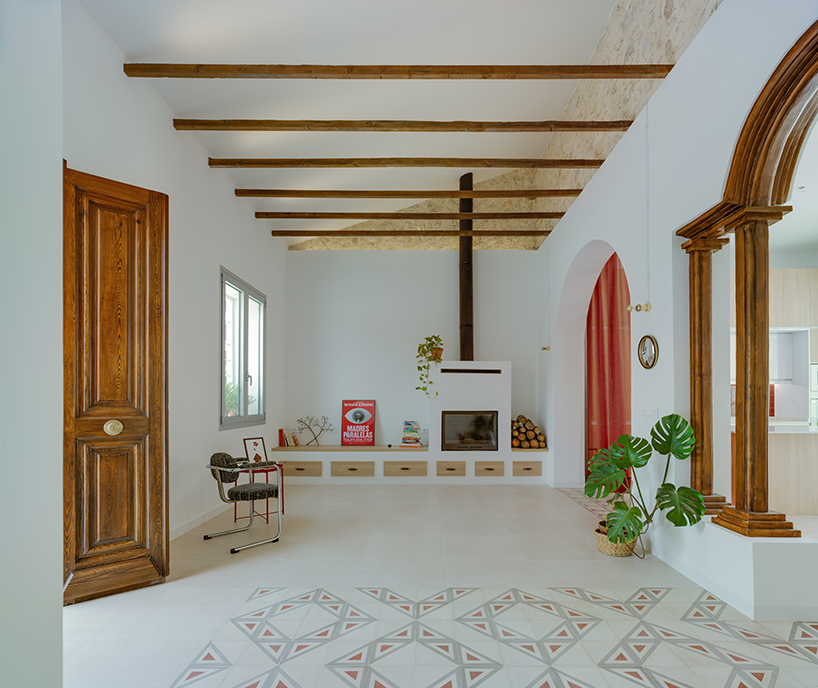
on the ceiling, part of the supporting wooden structure of the cane and plaster ceiling has been preserved
all images courtesy of estudioBamBam
Preserving the original Identity of the residence
Designers Antonio Campos and Adrián Segura of estudioBamBam aimed to preserve the rich structural components and stylistic traditional forms within the building, in order to transfer its historical identity to today’s functions and needs. Preserved elements include the wooden arches, the pavement, the wooden ceiling structure, the ashlar foundations, the interior woodwork, and the traditional blinds. The arches and the pavement are the main elements of the residence, on which the new spatial, material, and color strategies are based.
The space has been completely redesigned, with breathable spaces connected by a new arch, creating an interesting language between 1927 and 2022. To give even more meaning to the arch, other curved elements occupy the living area: from the hallway and access to the children’s room to the patio with incorporated outdoor cabinets and elements to support the vegetation. The original flooring of the house presents an intricate terrazzo with a unique brick red triangular pattern that alternates to create the two different design options.
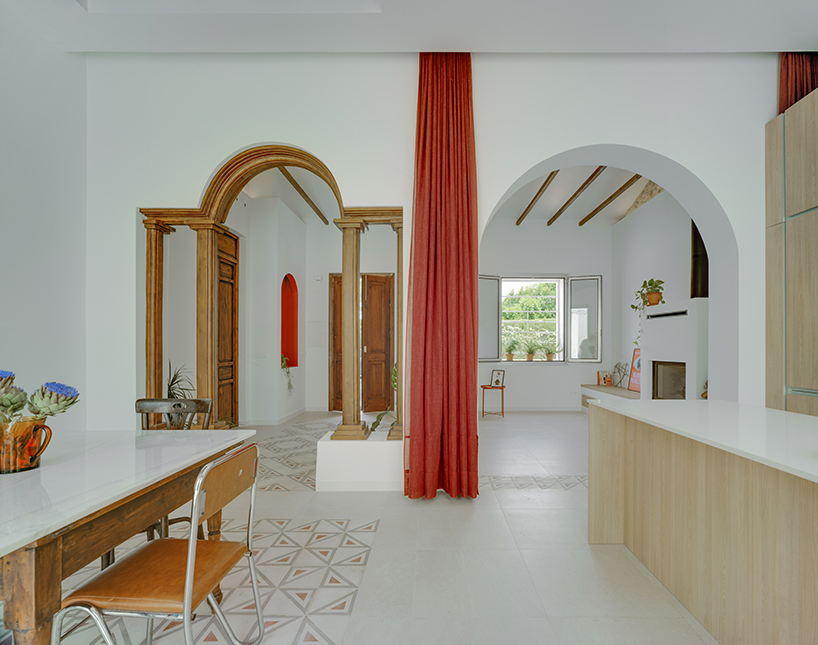
a curtain brings theatricality, intimacy, subtlety, flexibility, dynamism, and color to the house
recovering and reusing 300 tiles for energy rehabilitation
For the complete energetic rehabilitation of the house, it was necessary to lift off the entire original flooring. The intervention was carried out with great care to recover and reuse more than 300 well-preserved pieces to reintegrate them into the house, respecting the original patterns. Thus, they were reinstalled in the form of a mosaic carpet at the foot of both sides of the arch and the access and dining room. The designers have also introduced a third tile pattern to connect the opening created by creating a new arch from the central wall structure.
Part of the load-bearing wooden structure of the pipe and the plaster on the ceiling has been preserved and integrated as an element in the interior. The wooden interior and entrance doors were restored, preserving the great height of the ceiling. The blinds on the windows of the main facade were replaced, as they still serve as a sun and privacy screen, in addition to the warmth and domestic character they convey.
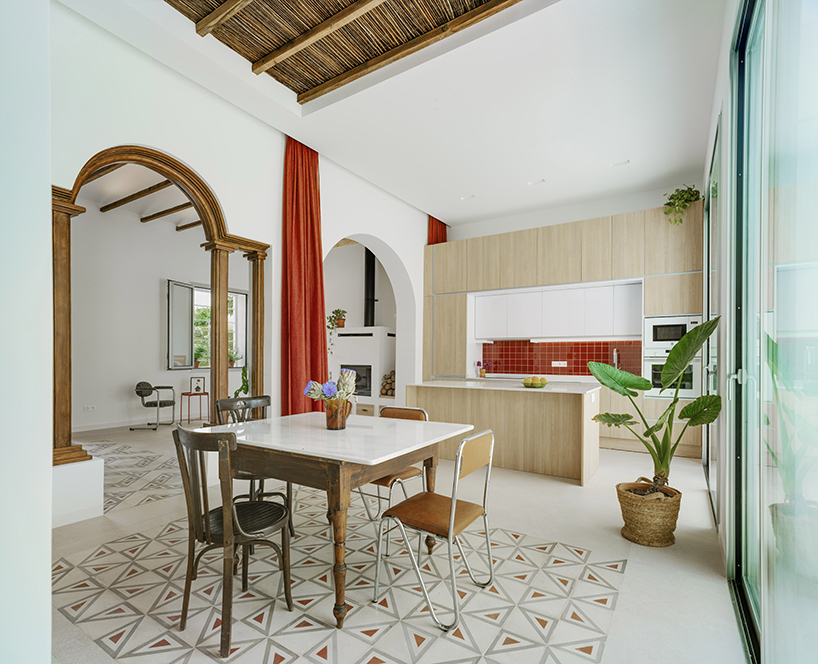
the arch and pavement characterize the residence
spatial proposal promotes interactiveness
The spatial proposal creates a large space for interactivity that connects the kitchen, dining room with an outdoor terrace that becomes the heart of the house. This relationship creates a coherent but not homogeneous area: each room has specific spatial conditions and can be partially independent through a large partition curtain that runs along the arcade in the central wall. The curtain brings a theatrical character, intimacy, flexibility, dynamism, and color to the house while highlighting the beauty of the two main arches.
The house was decorated with white walls and sand-colored flooring, while certain key elements like the flooring, the furniture, and the curtain, add color to the interiors. The proposal is complemented by the dark wood of the restored carpentry and the planting of the interior, the courtyard, and the facade. The energy performance of the house also combines traditional passive strategies with current ones. By connecting and opening the living spaces and improving the spatiality and use of the house, a large cross-ventilated volume is created between the street to the north and the courtyard to the south.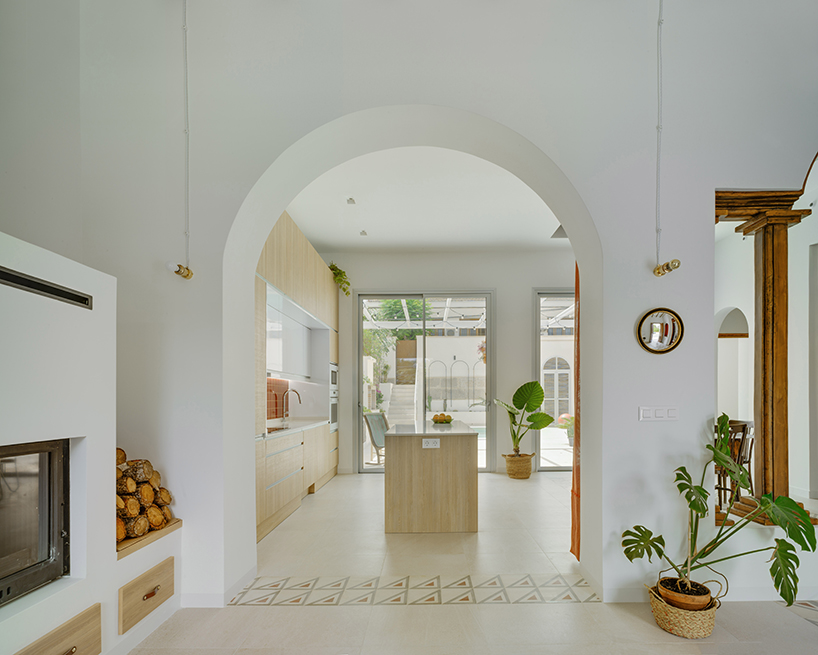
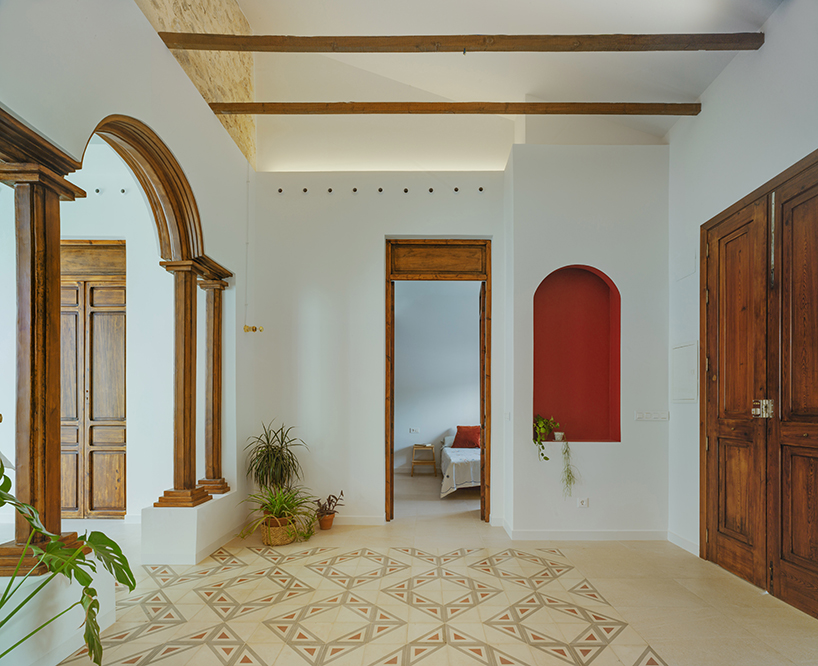
reintegrated 300 tiles
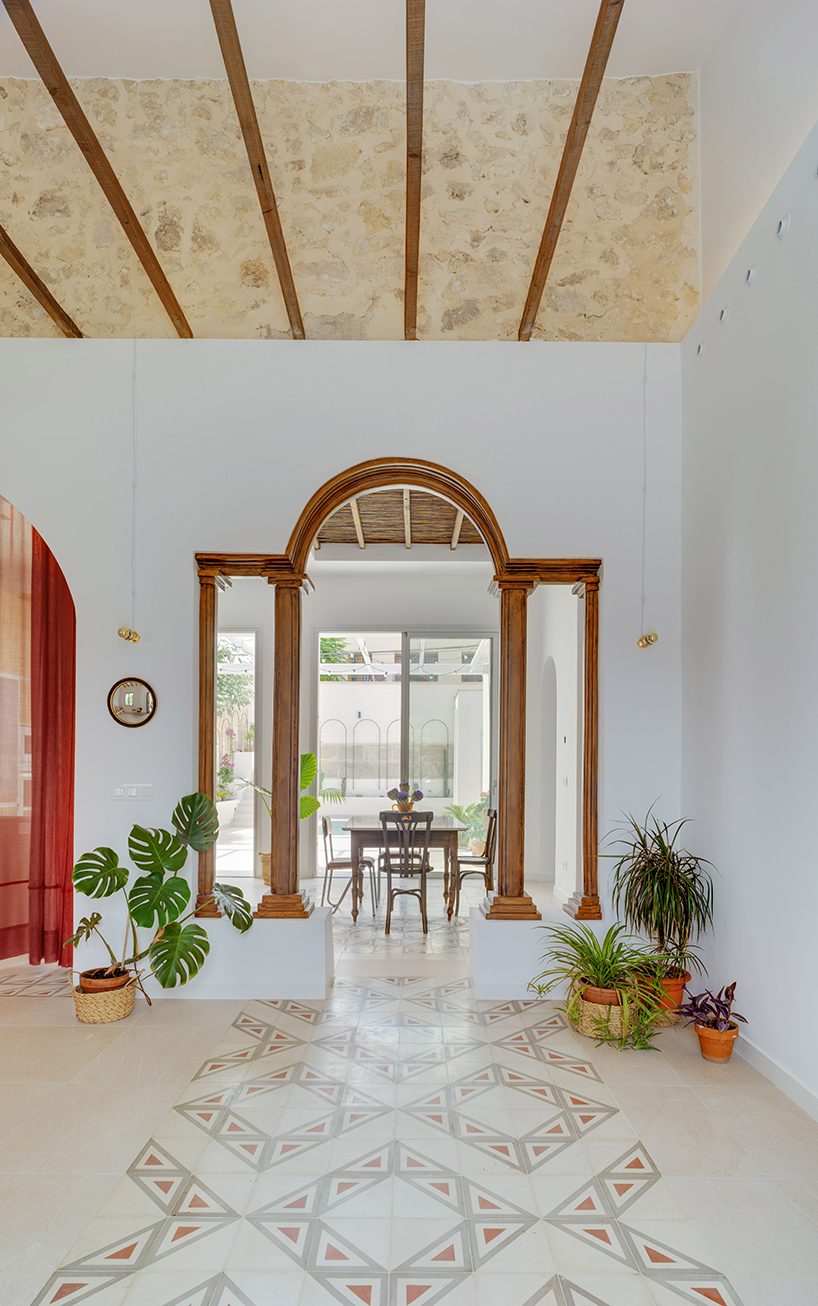
restored arch: the welcoming architectural element of the house

